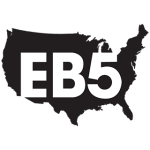
The EB-5 Immigrant Investor Program, which carves out a pathway for foreign investors to obtain U.S. green cards for themselves and their immediate family, offers two types of investment projects: those located within a targeted employment area (TEA), and those that are not. The majority of foreign nationals who make an EB-5 investment to obtain permanent resident status in the United States invest in a TEA project because it halves the amount of required capital from $1.8 million to $900,000.
In the past, EB-5 investors would obtain a TEA designation letter from the state labor department attesting to the project’s TEA status. They would then include this letter with their I-526 petition to United States Citizenship and Immigration Services (USCIS), solidifying their EB5 investment in the lower required amount.
That all changed when the Modernization Rule kicked in on November 21, 2019. The new regulation introduced a slew of new rules for TEAs, including the elimination of the state-issued TEA designation letter. The new set of rules places the onus for TEA status justification squarely on the shoulders of the EB-5 investor, requiring them to submit documentation supporting the designation of the project as a TEA project alongside their I-526 petition.
Investors can still obtain a letter to show USCIS that their project is in a TEA, but it can’t come from the state—it must now come from a private expert. And a letter alone won’t suffice—an investor must provide a myriad of documentation to justify their lower EB-5 investment amount.
EB5AN’s TEA Map
Proving the TEA status of an EB-5 project can be challenging—but EB5AN’s TEA map dramatically facilitates the process. EB-5 investors are required to use official data and figures from the U.S. Census Bureau and Bureau of Labor Statistics, but it can be difficult for the uninitiated to scour these sites to cull the relevant pieces of data. The price of mistakes is high, too—insufficient or inaccurate data can cost an EB-5 investor an extra $900,000—or, if they don’t have the funds to double their EB5 investment, their bright future in the United States.
EB5AN’s TEA map is the ideal solution for EB-5 investors looking to justify the TEA designation of their investment project. It’s simple and straightforward to use: simply enter an address, and the map will display the TEA status of the region. The map is designed for the easy and instantaneous identification of TEAs, with census tracts that qualify as TEAs highlighted in orange.
It’s important to note that even if the individual census tract that an EB-5 project is located in does not qualify for TEA status, it may when combined with adjacent census tracts. The EB5AN TEA map automatically combines census tracts when necessary to create a custom TEA. This maximizes the potential of any EB-5 project to qualify for TEA status.
If an investor’s EB-5 project is indeed located in a TEA, they can also download a free TEA letter template, further facilitating the process of demonstrating TEA status to USCIS. By simply filling in the details of the specific project, an EB-5 investor can easily craft a professionally written and succinct TEA letter that offers clear argumentation for the TEA designation of the given project.
